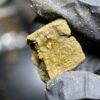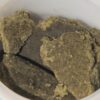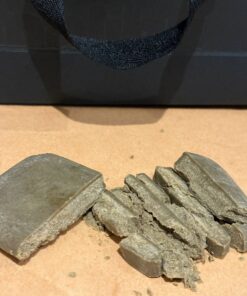Growing high-quality CBD flower demands patience, attention to detail, and a deep understanding of post-harvest practices. The true distinction between good and exceptional CBD flower lies in how the flower is trimmed and cured for maximum potency. Every step after harvest influences the cannabinoid content, the state of the trichomes, and the preservation of terpenes. Achieving a perfect balance between potency preservation, aroma, and visual appeal requires careful precision.
How cbd flower is trimmed and cured for maximum potency
What trimming methods exist for cbd flower?
Trimming determines the amount of plant material that remains on the finished buds. Beyond aesthetics, this process directly affects both the final cannabinoid content and the preservation of valuable terpenes. Various trimming methods offer distinct advantages, making it essential to choose the right approach based on the specific batch or desired outcome.
How cbd flower is trimmed and cured for maximum potency
When deciding between hand trimming and machine trimming, growers must weigh the importance of speed against the need to protect delicate trichomes and maintain each strain’s unique aroma. Understanding these options allows for more informed decisions tailored to preserving quality. Hand-trimming preserves the bud structure better compared to machine trimming, which results in a more potent and aesthetically pleasing product.
What makes hand trimming different from machine trimming?
Hand trimming is often considered the gold standard among craft growers focused on potency preservation. Skilled trimmers use scissors to gently remove small sugar leaves and stems, resulting in minimal trichome loss and optimal maintenance of natural cannabinoids within resin glands. This technique also enables close inspection, ensuring market-ready buds and consistent quality control.
In contrast, machine trimming accelerates processing by utilizing blades or rotors to strip away excess leaf matter. While efficient, machines may inadvertently damage fragile flowers and cause trichome loss, which can impact both potency and subtle aspects of aroma preservation. Many large-scale producers rely on this method despite its potential effects on overall trichome condition.
Wet trimming vs dry trimming: which is better for potency?
Both wet trimming and dry trimming have dedicated advocates. Wet trimming involves removing leaves and stems immediately after harvest while the plant is still moist, making it easier to see what needs to be cut. However, sticky trichomes might get lost if tools or gloves become clogged during the process. Some believe wet-trimmed buds dry faster and achieve a cleaner look.
With dry trimming, removal of leaves and stems occurs only after the flowers have mostly dried. Since trichomes harden as moisture dissipates, fewer are lost during handling, helping to retain more cannabinoids and preserve aromatic compounds that define each strain’s scent. This slower technique often supports higher potency preservation.
How cbd flower is trimmed and cured for maximum potency
How does the drying process affect cbd flower quality?
After trimming, correctly drying the CBD flower becomes crucial. The goal is to gradually remove moisture without overdrying, which could cause brittle buds and loss of volatile terpenes. Throughout this stage, it is essential to closely control temperature and humidity. Raising temperatures to accelerate drying can compromise flavor and cannabinoid integrity.
The choice of drying environment significantly influences the outcome. Ideally, freshly harvested flowers are hung upside down in a dark, controlled environment with steady airflow, humidity, and temperature. Optimal conditions typically range from 60-70°F (15-21°C) and 50-60% relative humidity. Over approximately two weeks, compact, aromatic, and potent buds take shape.
- Hang-drying helps preserve bud structure and minimizes physical damage.
- Screens or racks provide alternatives when space is limited.
- Daily checks are vital to prevent mold growth and ensure even drying.
Why timing and environment matter during harvest
Harvest timing is never arbitrary—waiting for ideal maturity is key. Most growers monitor trichome condition: clear trichomes indicate more time is needed, while cloudy or amber ones signal peak cannabinoid content. Harvesting too early reduces effects; harvesting too late risks cannabinoid degradation.
Immediately after cutting, maintaining a controlled environment is critical. Exposure to light, shifts in humidity, and inconsistent air movement can quickly degrade cannabinoids and terpene profiles, impacting every subsequent step from drying to curing.
Temperature and humidity: how controlled should the environment be?
A predictable climate ensures slow and uniform moisture evaporation. Excessive heat causes premature vaporization of cannabinoids and terpenes, leaving behind bland, less effective buds. Cooler environments help preserve aromas and flavors. Properly fine-tuned humidity prevents mold and bacterial issues, especially in crowded drying spaces.
Maintaining darkness is equally important since constant exposure to light breaks down many desirable compounds. Most indoor setups use blackout curtains or cover windows throughout this multi-week process to retain value and effect.
How does proper harvest timing influence curing?
Accurate harvest timing is essential to achieving optimal results. Harvesting at just the right moment secures the highest concentrations of beneficial compounds like CBD, CBG, and other trace cannabinoids. Observing trichome color assists in selecting the perfect day for harvest.
Mature flowers reach their aromatic and cannabinoid peaks simultaneously. Beginning trimming, drying, and curing with perfectly ripe material produces smoother, more flavorful smoke and maximizes satisfaction.
What goes into the curing process for cbd flower?
Once dried, CBD flower still requires proper curing before packaging or consumption. Effective curing refines the product by enhancing taste, smoothing inhalation, and increasing potency. This phase removes residual chlorophyll, boosts shelf life, and optimizes both cannabinoid and terpene expression.
Typically, trim crews store buds in airtight glass jars or food-safe containers placed in cool, dimly lit areas. Containers are loosely packed to allow sufficient air circulation, promoting consistent results throughout the batch.
How to cure for optimum cannabinoid content?
During a four-to-eight week period, daily “burping” releases built-up moisture, preventing mold and facilitating the oxidation necessary for top-tier CBD flower. Avoid excessive opening, as this may lead to aroma loss. With proper curing, hidden terpenes emerge, and cannabinoid levels stabilize at their maximum post-harvest point.
Consistent monitoring preserves the full spectrum of compounds within dense, resin-rich buds. Rushing through curing often results in diminished flavor and reduced effectiveness.
How does curing protect trichome condition and terpene/aroma preservation?
Keeping trichomes intact is fundamental to maintaining potency. These tiny resin glands contain the majority of the cannabinoids and terpenes. Gentle, thorough curing helps keep them attached to the flower surface, rather than breaking off or evaporating due to stress.
Long-term quality depends on a sterile environment and support for chemical complexity at all stages. Cure room standards mirror those used during drying: stable temperature, moderate humidity, and low light. Such conditions allow the full development of aromas and enable the flavor profile to mature over time.
- Avoid plastic bags for extended curing to prevent sweating and microbial growth.
- Glass or ceramic containers are best for slow, controlled curing.
- Burp jars daily, but never leave lids off for long periods to avoid contamination.
Which small details make a big difference in potency preservation?
Sometimes, minor adjustments yield significant improvements. Using sharp, clean scissors during hand trimming minimizes bruising and loss. Processing small quantities at a time helps regulate humidity, reducing risk of cannabinoid degradation. Removing large fan leaves while retaining some protective sugar leaf offers a buffer against damage without trapping excess moisture.
Consistent air movement balances humidity, preventing wet spots that could lead to rot or rapid cannabinoid breakdown. Regardless of operation size, an attentive approach ensures every gram produced reflects true craftsmanship.
- Always use clean tools to avoid introducing contaminants during trimming and curing.
- Regular calibration of hygrometers ensures accurate humidity control.
- Document environmental data throughout drying and curing to replicate successful results in future harvests.









Reviews
There are no reviews yet.